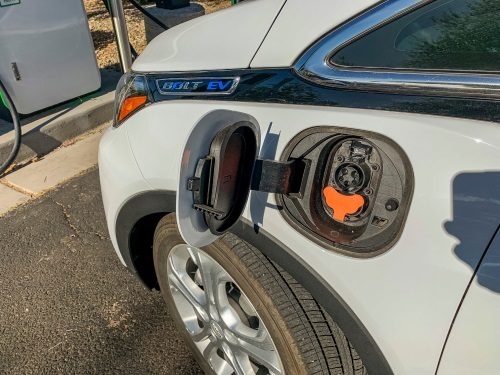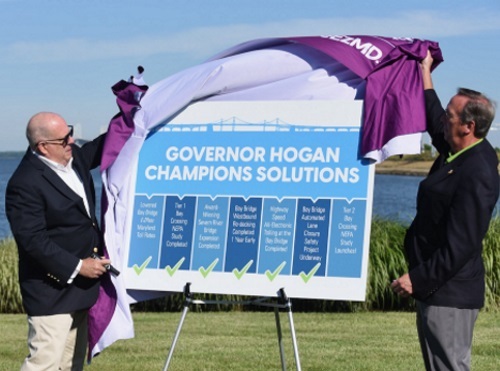FEDERAL ACTION
House Overwhelmingly Passes Its Version Of WRDA – Waterways Journal
COVID-19
Pre-travel testing requirement lifted: What you need to know about the new US travel policy – CNN
NEPA
Groups file new lawsuit to stop Idaho gold mine drilling – ABC NewsGreens win NEPA court fight over Calif. offshore fracking – E&E News
INFRASTRUCTURE RESILIENCE AND SUSTAINABILITY
Virtual Public Meeting – Texas Electric Vehicle (EV) Infrastructure Plan – TxDOT (link to video)
Solar highway noise barriers to be deployed across North America – pv magazine
How Rotterdam’s Green Rooftops Fight Urban Heat – Planetizen
GSA Completes First Bipartisan Infrastructure Law Land Port of Entry Project – GSA (Media release)
AIR QUALITY
What are you breathing? Air quality checks are to be available on Google Maps in the US! – Business Today
The aviation industry can hit its emissions goals, but it needs new fuels – MIT Technology Review
ENVIRONMENTAL JUSTICE
How New Jersey’s environmental justice law is beginning to affect operators around the country – Waste Dive
Updated Lake Champlain cleanup plan focuses on climate change, environmental justice – VTDigger
A largely forgotten flood ignited the environmental justice movement – Washington Post
NATURAL RESOURCES
DeSantis vetoes Everglades bill that advocates said would harm water quality – Tampa Bay Times
State suspends permit applications for titanium mine near Okefenokee Swamp – The Current
Wildfires in US West Match Climate Projections ‘Eerily’ Well – Bloomberg
HEALTH AND HUMAN ENVIRONMENT/ACTIVE TRANSPORTATION
Tennessee Unveils Trail Made Out of Tires – AP
Cleveland streets to include more multi-modal, environmentally-friendly designs under strengthened Complete and Green Streets policy – Cleveland.com
How this ‘little trail that could’ aims to change Salt Lake recreation, transit – KSL
What If Electric Bikes Were as Cheap as Conventional Bicycles? – CityLab
Construction of Shared-Use Path to Begin on Vanocker Canyon Road in Sturgis – South Dakota DOT (Media release)
TRB RESOURCES/ANNOUNCEMENTS
Geotechnical Data Applications and Visualization for Transportation – TRB (Webinar)
Linking Land Use and Transportation through Research – TRB (Blog)
FEDERAL REGISTER NOTICES
Drawbridge Operation Regulation; Atlantic Intracoastal Waterway (AICW) and Miami Beach Channel, Miami, FL – Coast Guard (Notice of proposed rulemaking)
Safety Zones in Reentry Sites; Jacksonville, Daytona, Cape Canaveral, Tampa, and Tallahassee, Florida – Coast Guard (Notice of proposed rulemaking)
Approval and Promulgation of Air Quality Implementation Plans; Delaware; Removal of Stage II Gasoline Vapor Recovery Program Requirements and Revision of Stage I Gasoline Vapor Recovery Program Requirements – EPA (Final rule)
Clean Water Act Section 401 Water Quality Certification Improvement Rule – EPA (Proposed rule)
Air Plan Approval; Mississippi; Revision of Excess Emissions Provisions – EPA (Proposed rule)
National Emission Standards for Hazardous Air Pollutants: Gasoline Distribution Technology Review and Standards of Performance for Bulk Gasoline Terminals Review – EPA (Proposed rule)
California State Motor Vehicle Pollution Control Standards; Heavy- Duty Vehicle and Engine Emission Warranty and Maintenance Provisions; Request for Waiver of Preemption; Opportunity for Public Hearing and Public Comment – EPA (Notice of opportunity for public hearing and comment)
California State Motor Vehicle Pollution Control Standards and Nonroad Engine Pollution Control Standards; The ‘‘Omnibus’’ Low NOX Regulation; Request for Waivers of Preemption; Opportunity for Public Hearing and Public Comment – EPA (Notice of opportunity for public hearing and comment)
California State Motor Vehicle Pollution Control Standards; Advanced Clean Trucks; Zero Emission Airport Shuttle; Zero-Emission Power Train Certification; Request for Waiver of Preemption; Opportunity for Public Hearing and Public Comment – EPA (Notice of opportunity for public hearing and comment)
Proposed Consent Decree, Clean Air Act Citizen Suit – EPA (Notice of proposed consent
decree; request for public comment)
Development of Best Practices for Collection of Batteries To Be Recycled and Voluntary Battery Labeling Guidelines; Request for Information – EPA (RFI)
Recycling Education and Outreach; Grant Program and Model Recycling Program Toolkit; Request for Information – EPA (RFI)
Solid Waste Infrastructure for Recycling Program; Request for Information – EPA (RFI)
Assessing Fees for Excess and Unauthorized Grazing – Forest Service (Final rule)
Credit Assistance and Related Fees for Water Resources Infrastructure Projects – U.S. Army Corps of Engineers (Proposed rule)
Hazardous Materials: Frequently Asked Questions – Applicability of the Hazardous Materials Regulations; Extension of Comment Period and Notice of Public Informational Webinar – Pipeline and Hazardous Materials Safety Administration (Notice)
Notice of Intent To Prepare a Supplement to the Next Generation Delivery Vehicles Acquisitions Final Environmental Impact Statement – Postal Service (Notice)
Submission of Establishment of a New Parking Fee Area at Pearl Harbor National Memorial; Correction – National Park Service (Notice; correction)
Notice of Intent To Prepare an Environmental Impact Statement for US Wind’s Proposed Wind Energy Facility Offshore Maryland – Bureau of Ocean Energy Management (Notice; request for comments)


